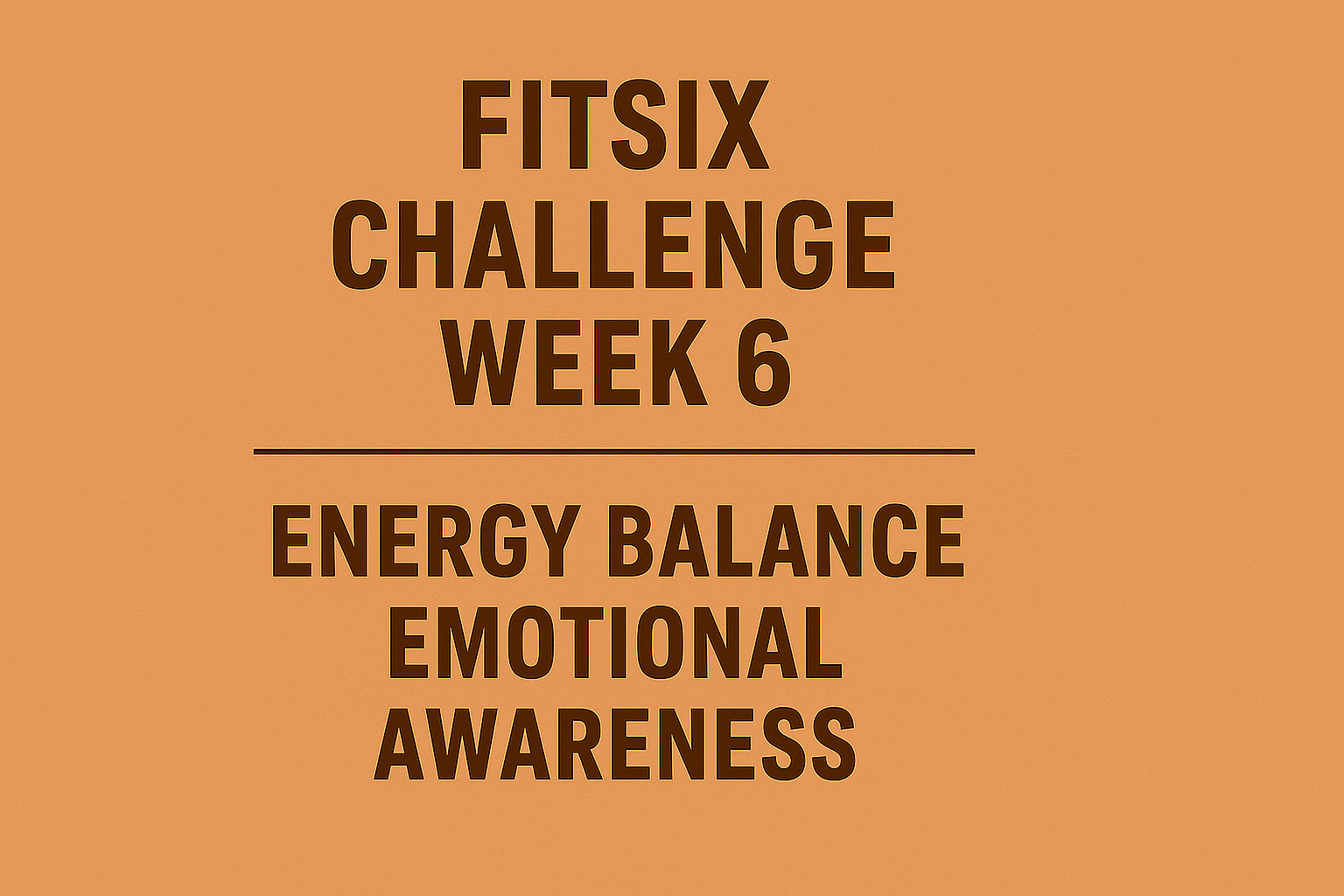FitSix Challenge: Week 6 — Energy Balance + Emotional Awareness


You’ve built momentum over the last five weeks—establishing routines, fueling with intention, and simplifying your habits. Now it’s time to layer in a critical piece of the puzzle: understanding energy balance and recognizing the emotional triggers that can derail progress.
This week is about combining the science of calories with the art of self-awareness. When you understand both, you gain the ability to adjust, adapt, and keep moving forward—even when life gets messy.
Energy balance (calories in vs. calories out) is the foundation of body composition. But here’s the truth: you don’t need to count every calorie to benefit. This week, we’re focusing on awareness, not obsession.
At the same time, emotional and stress-based eating can sabotage even the best-laid plans. Recognizing these patterns helps you respond with resilience instead of guilt.
📌 Pro Tip: Instead of obsessing over the numbers, focus on patterns. Are you eating more at night? Skipping meals? Overdoing snacks? Awareness alone creates change.
Stress, boredom, loneliness, and fatigue often lead us to food for comfort.
This week, notice:
Replace reaction with reflection: a short walk, a journal entry, or even a glass of water before deciding to eat.
Life will test your routines. Progress isn’t about never slipping—it’s about rebounding quickly. When you miss, learn from it, reset, and move on. This mindset shift separates long-term success from the stop-start cycle.
Week 6 isn’t about restriction—it’s about awareness. By understanding energy balance and recognizing emotional eating triggers, you build resilience and set yourself up for long-term success.